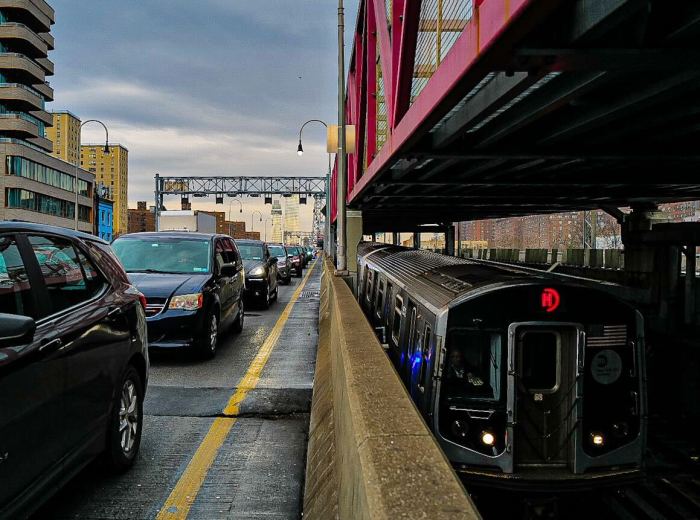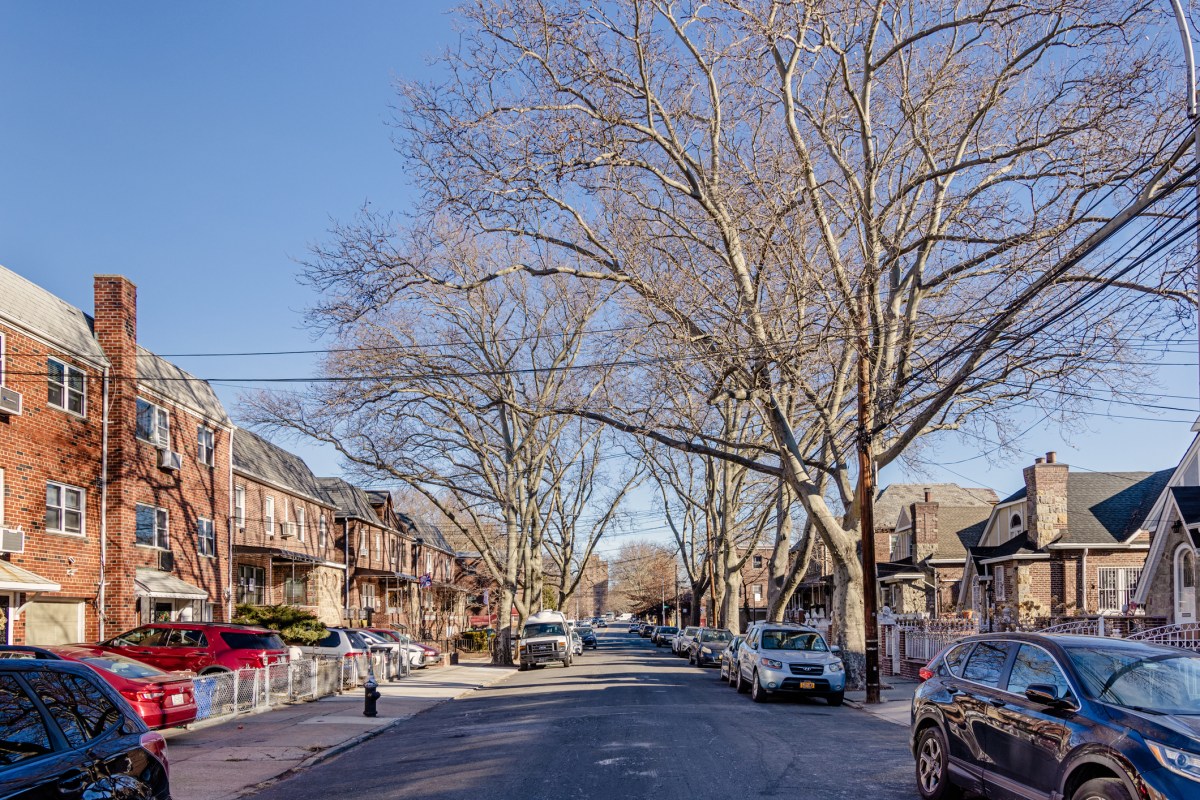
The phasing out of the MetroCard will be a slow and steady process.
Riders by now may have noticed the new card readers being retrofitted onto some turnstiles for the coming tap-based payment system, known as OMNY. The readers are part of a small pilot of the new fare technology that is expected to launch at the end of May at 16 subway stations along the 4, 5 and 6 lines in Manhattan and Brooklyn as well as all Staten Island buses.
The first phase is limited by design, according to Al Putre, the MTA’s chief revenue official overseeing the entire project, who is trying to learn from how other cities have rolled out new fare payment models.
“You only get one chance to get this right,” Putre said during a recent public meeting of the Permanent Citizens Advisory Board to the MTA. “So the pilot is deliberately small. However, it’s small to start but it grows pretty fast.”
Putre is looking to avoid the utter fiasco that came with the 2013 launch of the new fare payment system in Chicago, which was run by Cubic Transportation Systems — the same company operating the MTA’s new system as well as its current MetroCard system.
Chicago essentially flipped a switch, transitioning to a similar tap card payment model, which led to mass confusion, a host of bugs and other payment failures. The snafu resulted in the Chicago Transit Authority granting almost a million free bus and train rides in the first weeks of the launch, according to the Chicago Tribune.
“I don’t want 8 million people tapping right off the bat,” said Putre, a notably animated bureaucrat. “They did this in Chicago. They almost fired the mayor!”
This initial phase will only be practical for everyday use among some commuters on Staten Island, as well as subway riders who both live and work near the stations selected for the pilot, which runs along the Lexington Avenue line from Grand Central-42nd Street to the Atlantic Avenue-Barclays Center station.
The OMNY system, known as open fare payment technology, will eventually offer riders a host of different means to pay, including holding up a smartphone mobile wallet or an MTA app, a bank card or an OMNY card within an inch of the new readers. But to start, only mobile wallets and bank cards will be accepted.
All stations and buses will be equipped with scanners in time for a systemwide rollout by the end of 2020. The MetroCard will not be phased out until July 2023.
The MTA has begun an internal test with a few dozen workers and plans to ramp that number up to 1,500 before the system goes live at the end of May. The authority is also setting up a team at the state’s travel information phone line, 511, to deal specifically with OMNY-related questions during the pilot phase.
“[On] projects like this, how you start is how you finish. If you don’t get off on the right foot — if I call and I get the runaround, I get wrong information — that’s a lasting impression,” Putre said. “And I’m going to go on Twitter and I’m going to start complaining. One person can sour the whole thing. And so we want to avoid that.”
Steve Brunner, the vice president and general manager for Cubic’s New York Tri-State region, said in a statement that Chicago’s Ventra system has bounced back from its initial rollout and that New York will be getting the fare system that built London’s Oyster card.
“In New York, we’re applying the formula we successfully leveraged in London to deliver a user-friendly and efficient system that will help get New Yorkers where they want to go more seamlessly than ever,” Brunner said.
Advocates and experts in other cities said the functionality of the new fare technology hinges mostly on politics and policy. The greatest benefits of the systems have been how they allow riders to use the same payment method across all transit options — bus, subway, railroad or tram — the advocates and experts said.
The Opal card, as it’s known in Sydney, was a “game-changer” for that very reason, according to Mathew Hounsell, a transport analyst and planner at the University of Technology Sydney. But Opal, however, was “marred by bureaucrats and politicians” and led to the elimination of a weekly fare option, which “increased the cost to passengers and encouraged car use,” Hounsell added in an email.
London’s Oyster card brought new fare-capping policies that have been a hit among riders.
“Since the advent of contactless debit cards, I mostly use my bank card for the buses or the tube,” said Alice Ridley, a representative for the London-based advocacy group Campaign for Better Transport. “It works in the same way as the Oyster card and has the same daily cap. Now there’s the hopper fare as well, which means you can take as many single bus journeys as you need within one hour and you’ll only be charged £1.50.”
Riders without bank accounts, or those who prefer to use cash to load MetroCards, will need to use MetroCards until the official OMNY card is released, expected in February 2021. Currently some 2,000 retailers sell MetroCards and the MTA wants to expand to 4,000 or 5,000 retailers by the time OMNY rolls out systemwide, Putre said.
Riders initially must buy OMNY cards from retailers selling MetroCards. Eventually, the OMNY cards will be sold from vending machines installed in stations, replacing the 2,600 MetroCard machines currently in the system.
“You [won’t] need to fill anything anymore,” Putre said. “This is more like an E-ZPass than anything else. Once you get it, you’re good to go. The credit card is good to go. The debit card, good to go. The phone, good to go.”
Advocates hope OMNY will make for a more equitable transit system when paired with new fare policies that would have to be approved by the MTA board. For instance, the greatest subway discounts offered through monthly and weekly cards are only feasible for riders who can afford the upfront cost. The new fare system could eliminate the debate between monthly and value-based cards, allowing the MTA to credit riders if they reach a certain number of trips in a certain period.
The technology will also allow for all-door boarding on all city buses, which advocates believe could greatly speed up service by reducing time spent at the curb. NYC Transit President Andy Byford has endorsed all-door boarding and Putre said it could be in place systemwide by February 2021.
A totally integrated fare payment system that allows subway and bus riders to use the same payment systems on the Long Island Rail Road and Metro-North will come in February 2021, as well, Putre said.
“We talk about this all the time, wanting to be a regional system,” said Putre. "Seamless, so people can transfer and make payments with the same method across different agencies.”
But there are still plenty of other transit systems in the city and region that are not included. Putre said the MTA has begun discussing further integration with some of those services, like PATH, NYC Ferry, the Roosevelt Island Tram, the NICE bus network on Long Island and Westchester’s Bee-Line bus system.
“They want to be part of this project,” Putre said of the NYC Ferry service. “They wanted me to give them the MetroCard. But I was like, you know what, MetroCard is going south. There’s no point. Let’s just skip the MetroCard. Let’s move right to OMNY. So that’s where we’re headed.”
MetroCard phase out timeline:
—Late May, 2019: Initial pilot on Lexington Avenue line and Staten Island Buses
—2019: Incorporate payments via digital wallets, like Apple Pay, Samsung Pay or Google Pay
—Fall 2019: OMNY account management live on new MTA website and phone app
—December 2020: OMNY readers launch at all subway stations and bus routes
—February 2021: OMNY cards launch, on sale at local retailers
—February 2021: Launch OMNY/eTix 2.0 for Long Island Rail Road and Metro-North
—Late 2021: Incorporate other transit networks in region
—2022: Install 2,180 OMNY vending card machines in MTA stations
—2023: Retire MetroCard



































